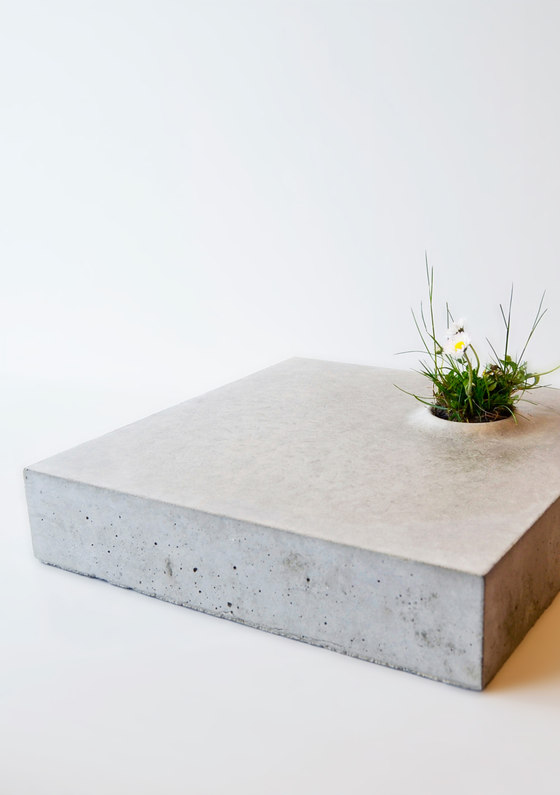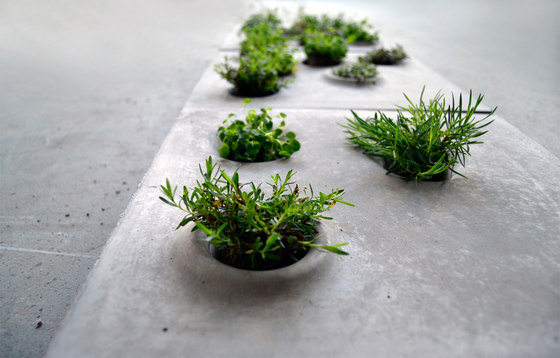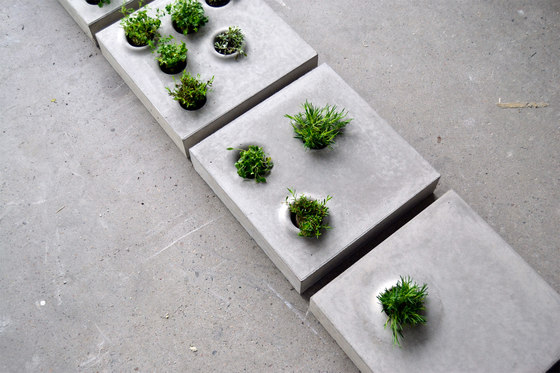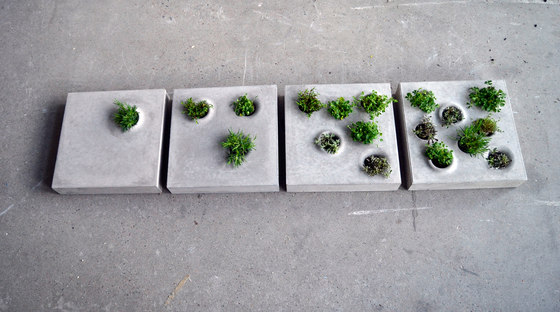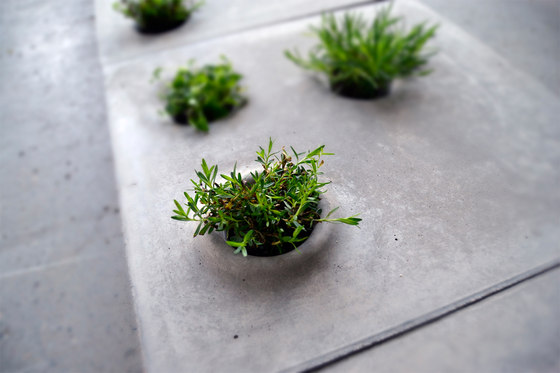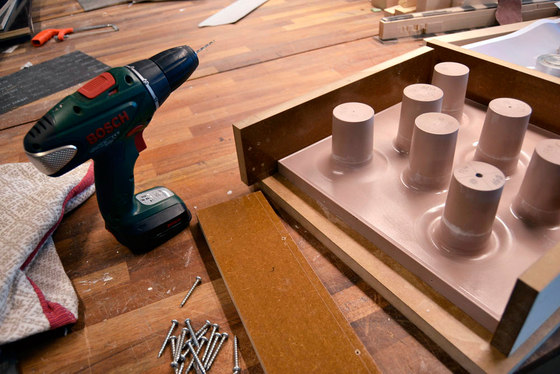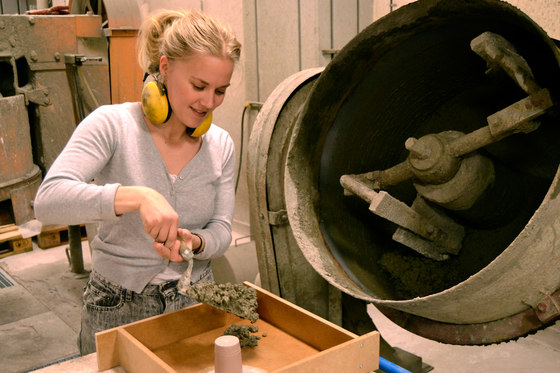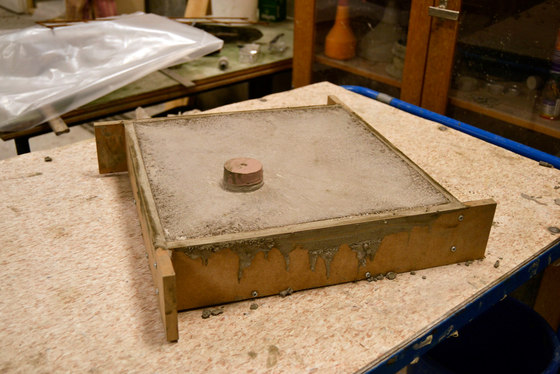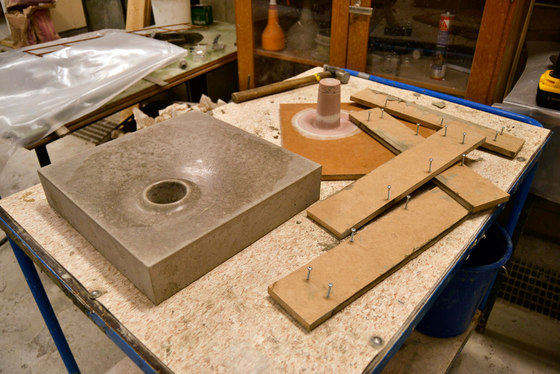Right now, the world is facing the largest wave of urban growth in history. The cities depend on nature’s ecosystem to function properly. The aim is to build dense, green and sustainable. In the future we must find new ways to more efficiently integrate green structure into the cities. Green to Grey is a series of paving stones that can host vegetation. The product and the vegetation can flexibly be integrated on the paved urban floor as many of the cities impervious surfaces consists of paving stones. The series consists of four paving stones. Each tile has different amounts of perforation; from 1 to 8 spaces where vegetation is allowed to grow. The quantity of greenery on the paved urban floor can easily be customized and increased without taking a lot of extra space.
In the city there are many impervious surfaces that are not worn. On these surfaces it is common that vegetation starts growing spontaneously, but it is considered as weed. By designing a space for vegetation in the paving stones, the plants get an accepted place on these impervious surfaces, and will not be considered as weed. The paving stones have the same dimensions as the most commonly used paving stone in Sweden. This allows them to fit within the existing system and that, in turn, facilitates the interaction of greenery.
Increasing the quantity of vegetation is positive for several reasons. The vegetation in the city helps with water hydration, cleaning the air, taking care of CO2, reducing urban heat islands and increased well-being for the urban citizens. The result: a more healthy and sustainable city environment.
With this project I am questioning the allowed places for greenery in the city. Pushing the boarders for where it can be accepted or not, and aspiring on leading the way for a new way of thinking when planning the many impervious surfaces in the city. Not separating the green and the grey, but mixing them. Considering the rate of urban growth in the world today, I think that this is of great importance both for the city and the people within the city to function well in the future.
Caroline Brahme
